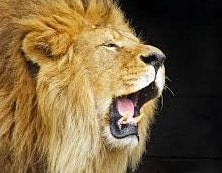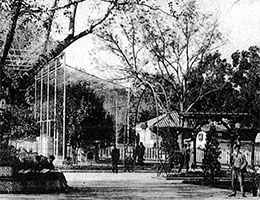 With etymological origin in the Latin ferus , beast is a term that usually refers to a wild animal . Wild animals, in this sense, are animals of species that have not been domesticated. For example: “Do not stray from the path: this forest is full of beasts” , “The beast attacked the child, causing him serious injuries” , “The guide explained to us that the jungle beasts try to hide when beings approach. humans.”
With etymological origin in the Latin ferus , beast is a term that usually refers to a wild animal . Wild animals, in this sense, are animals of species that have not been domesticated. For example: “Do not stray from the path: this forest is full of beasts” , “The beast attacked the child, causing him serious injuries” , “The guide explained to us that the jungle beasts try to hide when beings approach. humans.”
The idea is also linked to aggressiveness or anger : “Pablo has been a beast since he found out that he will have to work during the weekends,” “When the police tried to take his son, the woman became like a beast.”
Another use of the notion refers to a brutal or cruel individual: “This beast did not stop hitting the child until it took his life,” “Such a beast should spend the rest of its life in prison,” “To the guards. ” "The security guards had a hard time controlling the beast that attacked three people with shovels because they were wearing the shirt of a foreign team."
It is important to mention that in certain contexts, especially in sports , fierce is used as a positive qualification , since the concept is related to intensity , courage and impetus : “The Argentine tennis player was a fierce and managed to win after recover from five match points against” , “The Chilean forward was a beast and scored three goals in twenty minutes” , “Good, beast! Keep it up.”
Fiero, finally, can mention ugliness : “I don't understand how such a beautiful girl married such a fierce man,” “When she was little she was fierce, but over the years she became prettier.”
The Menagerie
 In the Buen Retiro Park, generally known as El Retiro , located in Madrid, is the Casa de Fieras , a former zoo that is currently called Jardines del Arquitecto Herrero Palacios .
In the Buen Retiro Park, generally known as El Retiro , located in Madrid, is the Casa de Fieras , a former zoo that is currently called Jardines del Arquitecto Herrero Palacios .
Madrid had its first zoo at the end of the 18th century, after Charles III ordered the creation of an animal park where the Cuesta de Moyano is today, in a portion of the Buen Retiro palace, specifically its gardens. This construction was intended as a complement to the Museum of Natural Sciences, which he wanted to erect in the current Prado Museum, close to the Botanical Garden.
It is worth mentioning that it was the second zoo on the entire European continent, only preceded by Vienna. It is important to note that these spaces were created to study animals for scientific purposes, and also to hold fights between bulls, tigers and lions, for example. Although it may be hard to believe, these atrocious confrontations were carried out to receive guests of honor from other countries or even to celebrate parties such as baptisms.
Throughout the 18th century, the animals of the Menagerie arrived mainly from Latin America, from where the governors and viceroys of the colony sent them; Among the most notable species are toucans, macaws, pumas , ocelots, alligators, snakes and apes. The story also tells that the governor of the Philippines gave the zoo an elephant, which they made walk from Cádiz to Madrid.
Almost at the beginning of the 19th century, the facilities were moved to the corner of the park that is close to the Puerta de Alcalá . The animals considered most dangerous were kept locked in the cages that were part of the so-called "Lionhouse." Due to the French invasion, many animals died and the Menagerie went through its worst moment.
